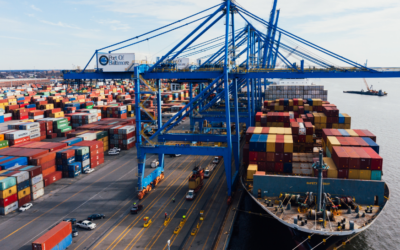With a current inflation rate of 9.1%, it’s hard to believe anything could be going down in price. However, that’s exactly what’s happening with freight rates. One large importer says they’re reducing their contracts 15% to 20%, which is significant but still won’t get us to where we were in 2019.
Let’s explore the correlation between costs going up in general and going down in the shipping industry, as well as what the future may hold for freight rates and the cost of doing business across international waters.
The Situation: Freight Rates Are on the Decline
The Wall Street Journal reported July 10 that freight rates are beginning to fall as a result of slowing demand and renegotiating contracts that were written at the height of the pandemic. While rates are still much higher than they were pre-COVID, they are dropping enough that shippers are taking notice. They still aren’t as competitive as they would like them to be, but it is a good omen for what may be coming down the pike.
The Specifics: Lower Demand Is Driving the Rate Change
As the costs of goods have increased in the last few months, consumer spending has decreased proportionally. That means there’s not as big of a demand for products or, for those shipping items around the globe, cargo space. The spot market was the first to see a reduction in freight rates, as carriers looked to compete with higher contract rates. That trend has since followed through to contracts, although some freight forwarders have not yet been able to negotiate new contracts that reflect the lower rates.
Good news associated with the lower demand is that the average delay for ships arriving late dropped to its lowest since April 2021: 6.1 days. After all the port delays earlier this year, this is a welcome relief for the global shipping business.
Projection: Expect Freight Rates to Continue to Fall
With consumer demand projected to remain low, experts predict that spot rates will continue to decline throughout the remainder of the year. However, the chief scientist at DAT Solutions LLC forecasts that shippers won’t see major effects of the decline until fuel costs go down as well. Although we are seeing some pennies coming off the cost of a gallon at the pumps as we fill our cars, that drop may not affect the shipping industry for a few months or longer.
And keep in mind that these dips in freight rates still won’t put us where we were pre-pandemic. As reported by The Wall Street Journal, rates in July 2022 are still four times higher than they were in July 2019. We have a way to go before we see those lower, “normal” rates—if we ever do.
Cyclone Shipping: Your Source for Rates and So Much More
At Cyclone Shipping, we are always paying attention to what’s going on in the shipping industry. We stay up to date with rates, closures, delays, and everything else that’s occurring so we can share that information with you. Be sure to check in with us regularly for the latest news.
And if you’re looking for a freight forwarder who always has your best interests center of mind, give us a call. We let you focus on your business while we get your shipments from point A to point B as efficiently as possible.




